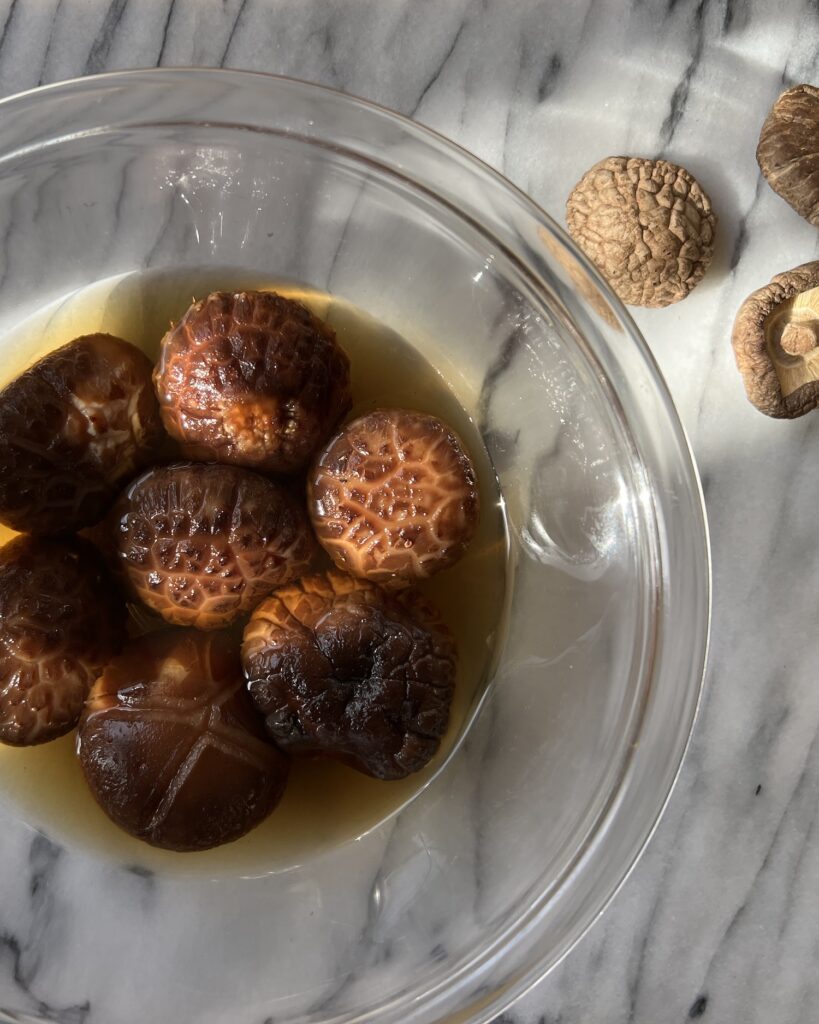
Developing recipes for my Ever-Green Vietnamese cookbook has been a multi-year meditation on vegetables – how to better understand them and how to make the most of their flavor, textures, and colors. And although I’ve long considered dried shiitakes a staple ingredient in my kitchen, I don't think I have put enough thought into explaining them to cooks.
In the world of Asian mushrooms, shiitake mushrooms are the go-to for many people. There are many other kinds of mushrooms used but shiitakes are a stalwart, what folks are most interested in using. To make the most of the mushroom, good cooks understand when to use fresh or dried shiitake, how to buy good ones without breaking the bank, how to rehydrate them so they express their fullest flavor, and how to prep them well for recipes. If these issues are fuzzy for you, I hope to help you with the following tips.
Fresh vs. Dried Shiitake Mushrooms: What is the difference?
Just because there are fresh and dried shiitake mushrooms at the market does not mean that they are interchangeable. Do you expect fresh and dried porcini mushrooms to function the same way in recipes? No you don’t. So, why think that fresh and dried shiitakes are the same?
Fresh shiitake mushrooms have a silky, creamy, delicate flavor. They’re often thin capped at the supermarket, which translates into light flavor. At Asian markets, you may find thick, capped fresh shiitakes, which have deeper flavor. All that said, dried mushrooms have a more concentrated earthy, woodsy, umami flavor than fresh ones. They are chewy silky, more meaty than fresh mushrooms. Sometimes you want the elegance of a fresh shiitake. Other times you need the depth of dried shiitakes. I wouldn’t sub one for the other unless I was in a big pinch.
How to Buy Dried Shiitakes (without Breaking the Bank)
Dried shiitakes sold at mainstream supermarkets – the ones in 1-ounce packages that look like flat, open parasols -- are relatively bland tasting. They are rather expensive at roughly $5 per ounce. If dried shiitakes play a minor role in a recipe, go ahead and use the supermarket ones. But if you want big shiitake presence in your food, shop at East or Southeast Asian markets (such as H Mart, Ranch 99, Uwajimaya, and Shun Fat). They have the best prices and selection.
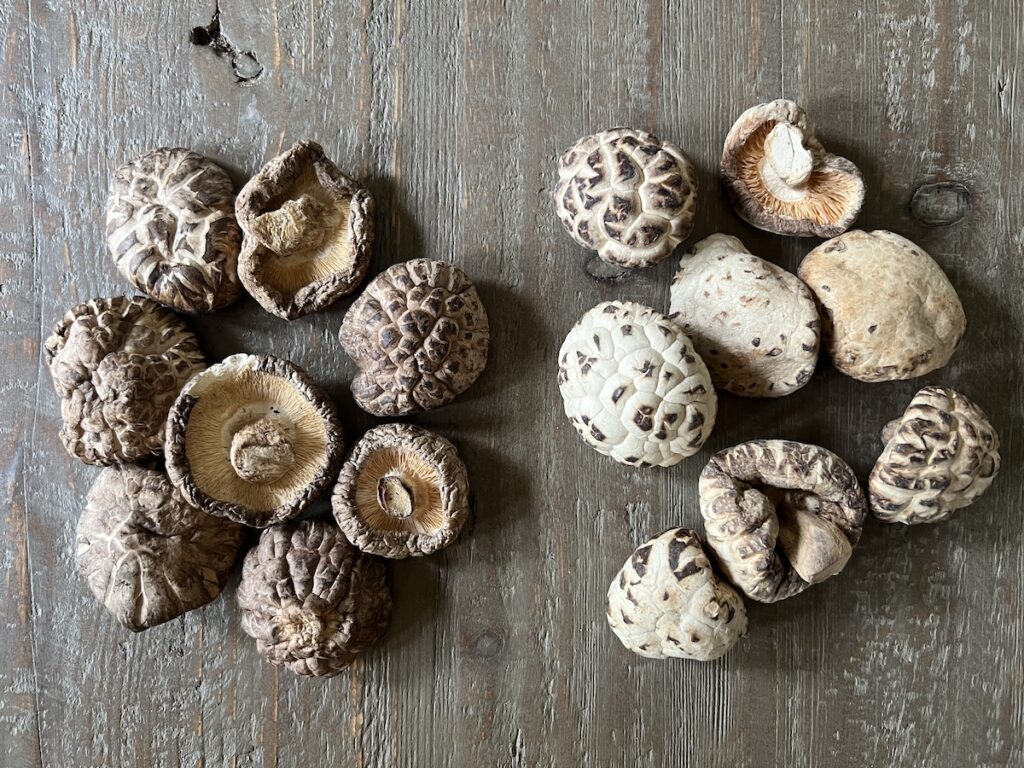
Purchase dried whole shiitake mushrooms. Sliced shiitake mushrooms offer convenience and faster soaking time, but they lack taste. In the dried mushroom section at the Asian market, choose a package containing thick curved caps marked by white or dark cracks, often described as “flower” shiitake. If possible, check the package’s backside to make sure the mushrooms are of good quality throughout. They may be simply labeled “dried mushroom.”
Choose a mid to high-priced package of dried shiitakes. Wei-Chuan (above, left) is a good brand that’s in the mid-range level. The mushrooms are a combination of lots of cracks and thick caps plus some slightly smaller, thinner ones. You can spend lots of money for whitish-grey shiitake mushrooms (above, right) full of cracks but honestly, you can spend a little less and still make tasty dishes.
Where are dried shiitakes from? Some domestic shiitake producers dry their shrooms. If you're shopping at an Asian market, the shiitakes mostly come from China. I purchase at the mid- to higher-end of the price range to ensure quality. I buy medium to large mushrooms, paying $15 to 20 per pound for the dried shiitakes. I have not had any issues with the shiitakes I've purchased at Asian markets.
How to store your dried shiitake stash? I keep mine in airtight containers with the silica packet to remove moisture. I've read about people freezing the dried mushrooms, and that would be fine if you worry about humidity.
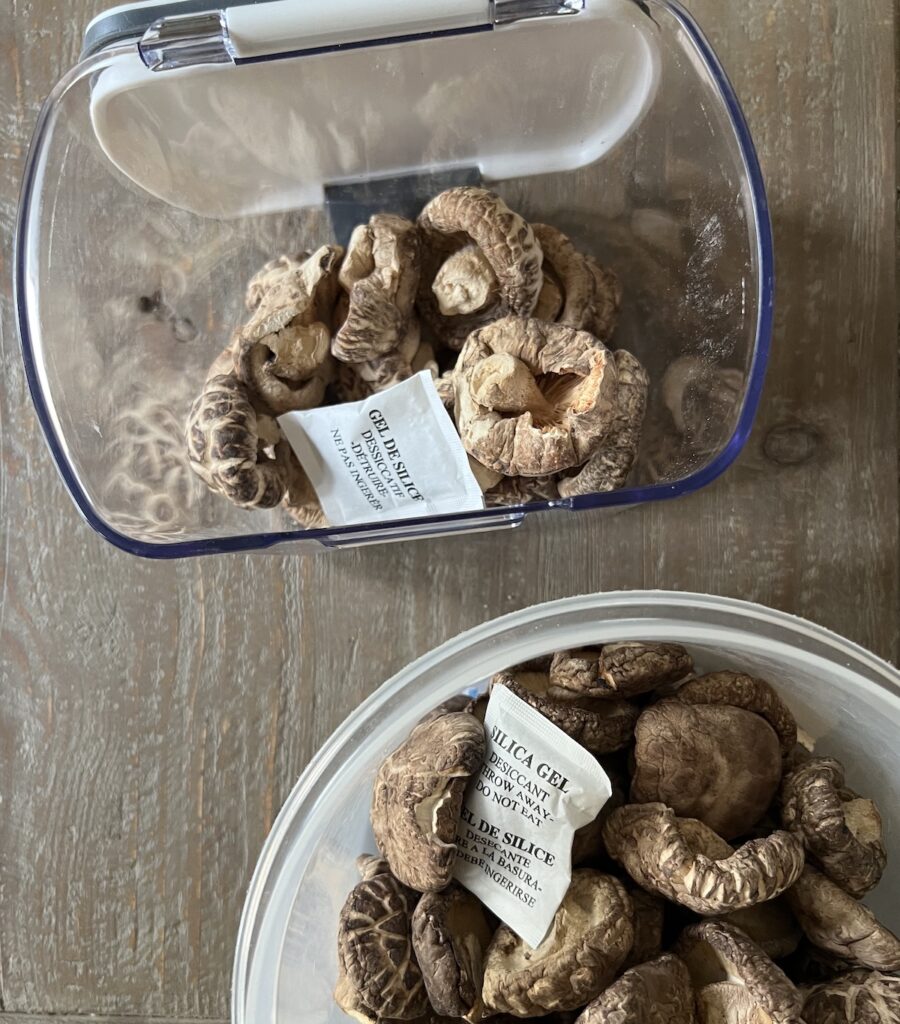
How to Measure Dried Shiitakes for Recipes
For many years, my recipes simply listed a rough count of dried mushrooms; when it matters, there was a post-prep yield in parentheses so cooks could cross-check. For Ever-Green Vietnamese, a cookbook that contains about 80 percent vegetarian or vegan recipes, mushrooms matter. I began using a weight measurement for dried shiitake mushroom. Is that too fussy? I don't think so. You'd weigh meat so why not give vegetables the same level of attention? A digital scale rarely lies. Moving forward on the mushroom front, expect weight measurements from me! You and I will have a better chance at having matching flavor results.
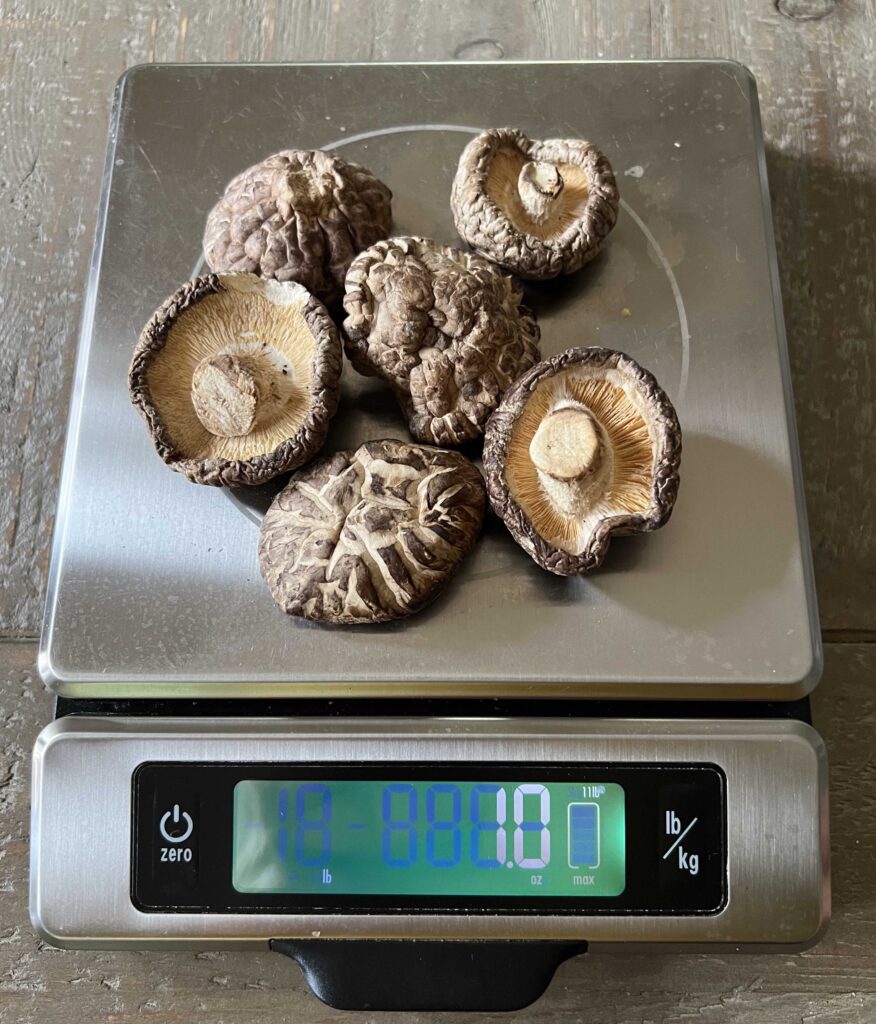
FAQ: How to Best Soak Dried Shiitakes?
A few questions I have had and you may also have had about soaking shiitakes:
- How long does it take to rehydrate dried shiitakes? There are recipes that call for soaking dried shiitake mushrooms for 15 minutes (supermarket ones would be alright), 30 minutes (mine are only slightly softened), and 2 hours (spongy but still firm). Some call for pouring hot water over the mushrooms, but that hurried soak results in weirdly chewy-hard mushrooms that look ok but are difficult to eat. For deep flavor, the most aroma, and super luxurious texture, rehydrate dried shiitakes in water for at least 6 hours (I’ve let them soak for up to 24 hours). Start in the morning or do it overnight. If you plan ahead, you'll get the best shiitakes for your recipes. (Below are pieces cut from a well-soaked shiitake beauty!) Like love, don't hurry the rehydration.
- What temperature of water to use for soaking the mushrooms? Room temperature water is fine.
- How much water to use for soaking dried shiitakes? If I want a certain flavor concentration, I call for a water amount for soaking. If it doesn't matter, I put the mushrooms in a bowl and add water so they float and bob around comfortably.
- Gills up or down during soaking? I tend to put the gills side down.
- Should you cover the mushrooms as they soak? If you like, cover the bowl.
- Should you refrigerate mushrooms while they soak? Go ahead and do it, if you like, covering the bowl so the liquid doesn't absorb other odors in the fridge.
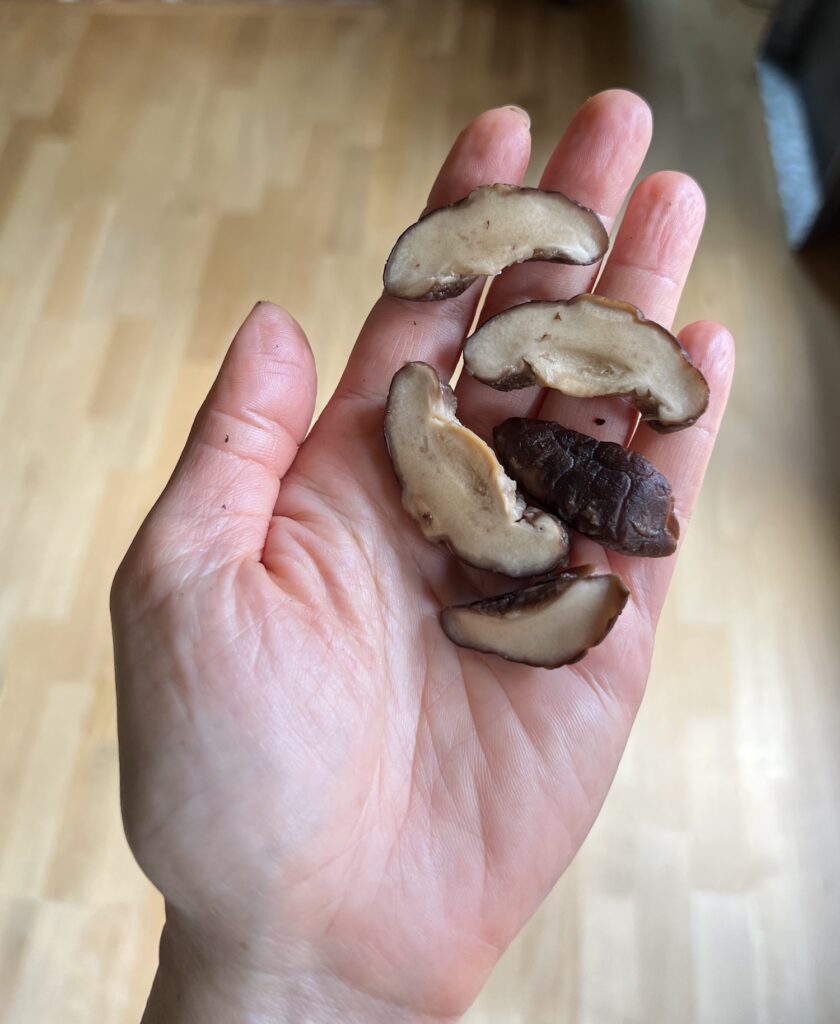
Can you store soaked Shiitake Mushrooms?
Heck yes! Rehydrated mushrooms keep well in the fridge for a week, so feel free to prep way in advance; if a recipe calls for a certain prep, cut the soaked shiitakes to save time. You may freeze rehydrated shiitakes mushrooms too. I would freeze the shrooms uncut because if you cut them, you're committing to a particular use. I like to hedge on advance prep!
How to Prep Soaked Shiitakes for Recipes – Video Tips
Now that you've bought and soaked your dried mushrooms, how do you prep them? Here's a video to guide you. As usual, refresh your browser or turn off any ad blockers, if you don't see the video. And, when it prompt you on "Next" or "Stay" -- choose STAY!
Shiitake Mushroomy Recipes
Get shopping, soaking and prepping your 'shrooms for these recipes and more!















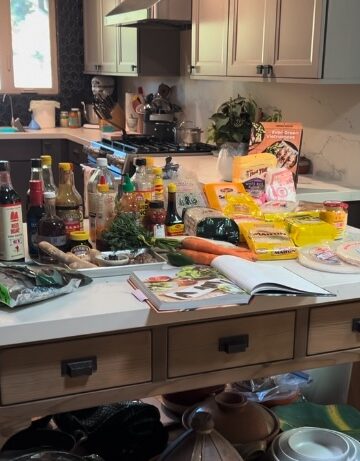
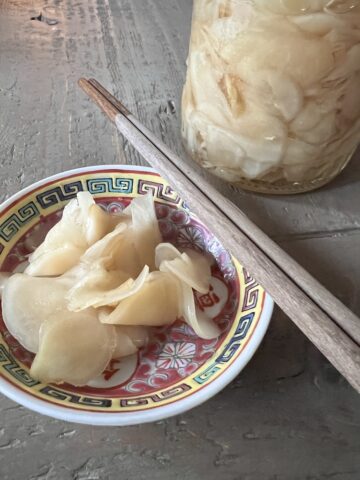
Jacqueline Church says
I always put a small dish or plate on top of the mushrooms to ensure they're fully submerged.
Also, save that soaking liquid! Full of umami and nutrition! The soaking liquid an be frozen if you're not using it immediately and will boost the flavor of any future stock or soup or stew or bolognese...